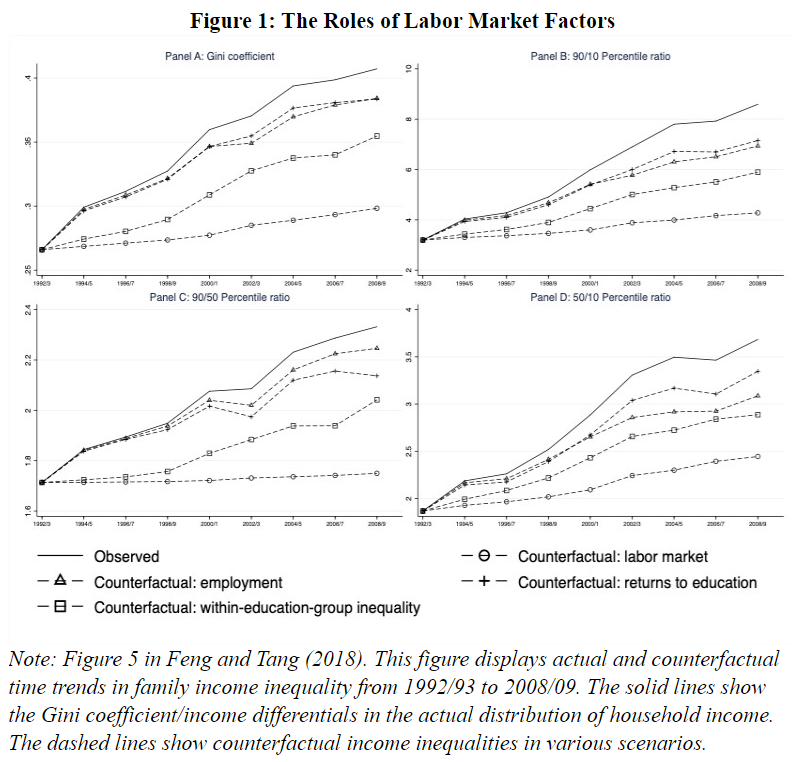Friday, March 29, 2019
Accounting for Urban China’s Rising Income Inequality: The Roles of the Labor Market, Human Capital, and Marriage Market Factors
From a new VoxChina post on China’s rising income inequality:
“China has witnessed persistent increases in economic inequality since the early 1990s when the urban labor market began its transformation — from centrally-controlled to market-driven. Using the Urban Household Survey data, this paper (Feng and Tang, 2018) documents the trends in income inequality over the period of 1992-2009 and decomposes changes in income inequality by considering three main factors: the labor market, human capital, and marriage market. We find that labor market factors account for approximately three-quarters of the overall increases in income inequality while the falling marriage rate has contributed the other quarter. Changes in human capital levels and marital assortativeness have not contributed to the rising inequality.”
“Our results suggest that labor market factors are most important to the increases in family income inequality during the 1992-2009 period. Figure 1 shows that if allthree of the factors are held unchanged at the levels of 1992/93, the Gini coefficient would only increase from 0.266 to 0.298, instead of to the actual 0.407. Therefore, labor market factors collectively contribute more than three-quarters of the total increase in inequality. Further, labor market factors are more important in affecting the upper part of the income distribution as they account for almost all of the changes in P90/P50, the ratio of the 90th percentile to median family incomes.
A more careful examination suggests that each labor market factor plays an important role. Changes in employment and returns to education both contribute about 16 percent of the change in inequality over the study period, while within-education-group inequality accounts for around 37 percent of the overall increase in inequality. Therefore, within-education-group inequalities are not only crucial in changes to individual income inequality, as many previous researchers have noted, but are also important in the rise in regards to family income inequality.”
Posted by at 10:20 AM
Labels: Inclusive Growth
Subscribe to: Posts
